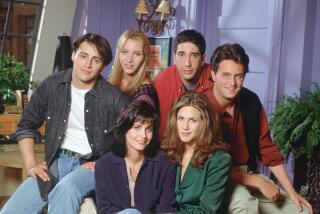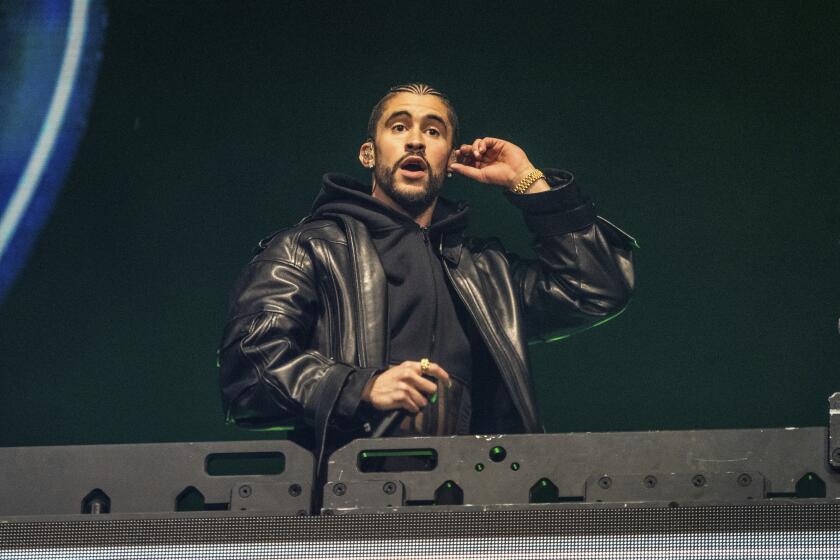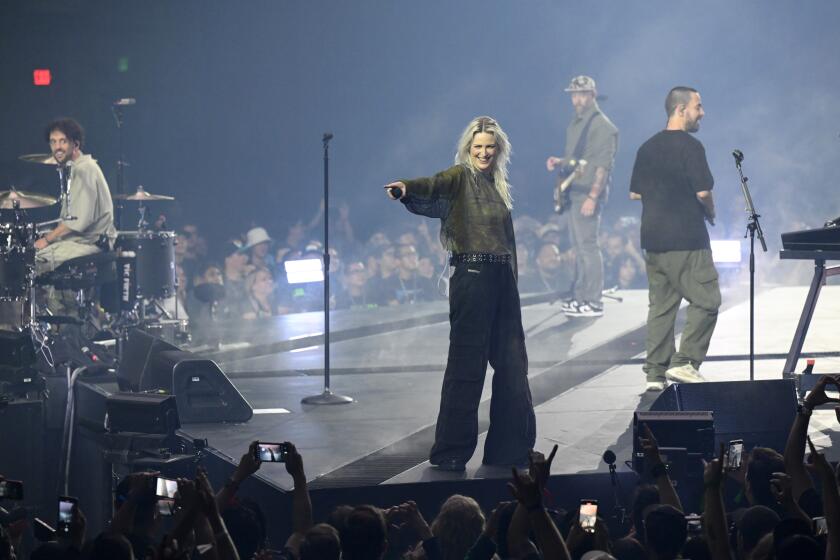Services for Guitar Pioneer Kauffman
- Share via
Funeral services were held Saturday for Clayton Orr (Doc) Kauffman, a local inventor, musician and pioneer in the electric guitar industry in Southern California who died Tuesday of natural causes at St. Jude Hospital and Rehabilitation Center in Fullerton. He was 89.
Kauffman, who built everything from aircraft parts to amplifiers, was best known in the music world for his three-year partnership with Leo Fender, who later established the Fender Guitar Co. in Fullerton.
Calling their partnership K & F Electrical Instruments, they developed solid-body electric guitars, guitar pickups and a record changer before Kauffman sold out to Fender in 1946.
“He was a real, real nice guy,” said guitar historian Richard Smith, a columnist for Guitar Player magazine. “And he was a fine musician.”
Kauffman came to California in 1922 from Kansas and pursued a musical career as well as his knack for invention.
In the 1982 book “American Guitars,” author Tom Wheeler described Kauffman as a “relentless tinkerer, having fashioned steam engines from five-gallon milk cans when he was a kid and having built farm machinery, tools, radios, police transmitters and a motorcycle.”
Before his association with Fender, Kauffman invented and patented one of the first vibrato tailpieces for guitars. It was later used by guitarists Chet Atkins, Les Paul and Eddie Peabody. He also invented a guitar with a mechanical vibrato device.
The tailpiece and the guitar, called a vibrola, were used by the Rickenbacher Guitar Co. in the 1930s.
Noting that the vibrola was not very successful commercially, Smith said that the invention was nonetheless used by many professional musicians at the time, including Perry Botkin, a guitarist who played with Bing Crosby and other top-name singers.
“He really was a pioneer in the electric guitar field,” Smith said. “The electric guitar industry has been real important in Southern California, and he was on the ground floor of that.”
In the 1950s, after leaving Fender, Kauffman opened a small machine shop and turned out aircraft parts, but continued his involvement in music.
As recently as last year, Kauffman performed at local spots, including Sizzler steakhouses, playing songs that were popular in the 1930s on guitars that he made.
Kauffman also played violin, saxophone, clarinet, piano and banjo. It is reported that he gave Fender the impetus to form a guitar company rather than one to mass-produce machine parts or radios, Smith said.
“As a musician, he definitely influenced Leo,” Smith said.
Kauffman made several home recordings but never succeeded as a recording artist, Smith said.
His inventive drive lasted throughout his life. Until recently, he continued to fashion custom guitars that he sold to individuals and invent gadgets in a shop in his Fullerton home.
“He considered himself an inventor, not a businessman,” Smith said, noting that Kauffman’s association with Fender did not make him “any real money.” He did, however, get money from an inheritance in Kansas.
“He was from an old generation of tinkerers,” Smith said. “He walked around with a clove of garlic in his pocket because he thought he would live longer if he ate it.
“He was a character,” said Smith, who called off a visit to Kauffman last week because of the musician’s deteriorating condition. “He was working on the perpetual motion machine, like everyone else.”
Burial was at Fairhaven Memorial Park in Santa Ana, following a service in the chapel.
He is survived by a son, two daughters, six grandchildren and eight great-grandchildren.
More to Read
The biggest entertainment stories
Get our big stories about Hollywood, film, television, music, arts, culture and more right in your inbox as soon as they publish.
You may occasionally receive promotional content from the Los Angeles Times.








